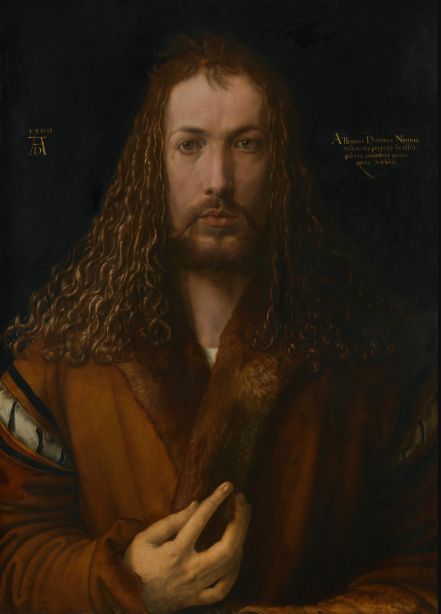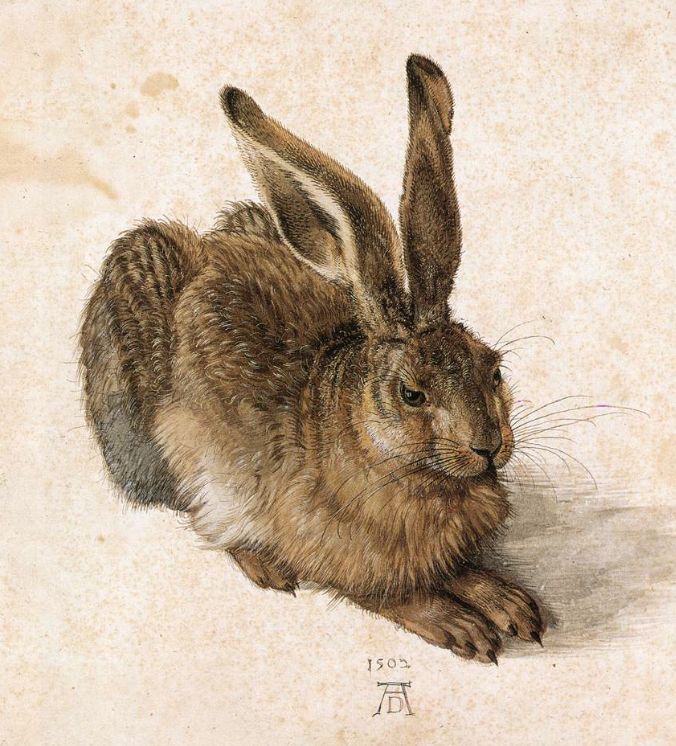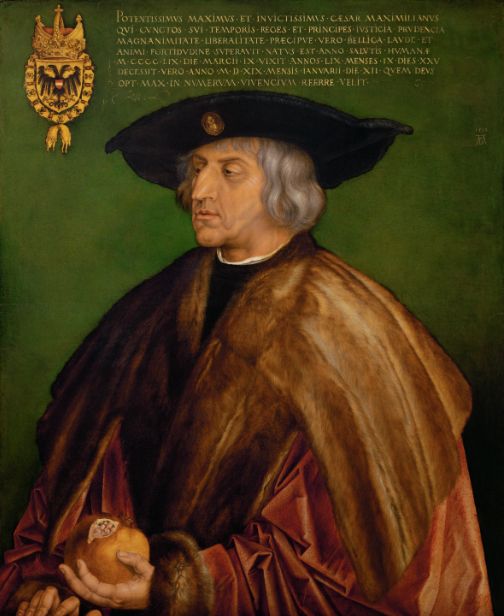In the dazzling age of the Renaissance, Italian artists undoubtedly stood as the stars of the era, but in the northern region of Germany, a brilliant artist also emerged, making significant contributions to the history of human art. He was Albrecht Dürer (1471-1528). Dürer not only created a Northern style comparable to the Italian Renaissance but also perfectly combined art with science, religion, and humanism, becoming a grand master.

Dürer was born into a goldsmith family in Nuremberg, where his artistic enlightenment came from his father's goldsmith workshop. However, young Dürer was not content with this; he received apprenticeship training under a Nuremberg painter and woodcut artist, and worked on book illustrations in the Rhineland and Basel. In 1494, Dürer went to Venice, a gathering place for humanists and artists, marking an important milestone in his artistic career. In Venice, he established connections with local humanists and came into contact with works by Pollaiuolo and Mantegna, which profoundly influenced his creations.
During his time in Venice, Dürer was baptized in the art of the Italian Renaissance. He not only studied the prevalent paintings and sculptures of the time but also delved deeply into classical art's proportions and anatomy. These learning experiences not only broadened his artistic vision but also led to a leap in his technical skills. In Venice, he formed deep friendships and academic exchanges with many humanists and artists, laying a solid foundation for his future creations.
Upon returning to Nuremberg, Dürer did not immediately adopt classical subjects but focused on religious paintings and prints. His print works were particularly outstanding, with "St. Eustace" showcasing his exceptional technical and artistic achievements, demonstrating subtle gradations of light and shadow and detailed textures. Dürer’s prints were unparalleled in technique and reached unprecedented heights in emotional expression. He breathed new life and artistic value into religious themes through his works.


Dürer also had profound insights into art theory. He believed that art is hidden in nature, and the artist's task is to discover it. He emphasized the importance of studying and observing nature in art creation, asserting that only through continuous learning and practice could truly beautiful artistic images be created. His sketch works, exceeding 1,700 in number, far surpassed those of any contemporary artist, demonstrating his relentless passion for observing nature and creating art.

Dürer's self-portraits also show his high level of self-awareness and artistic originality. His several self-portraits not only display his superb painting skills but also convey his deep understanding of his identity and the status of artists. In a landmark self-portrait, Dürer mimicked the posture and features of Christ, expressing his belief in the sacred creativity of artists.
As an artist, Dürer not only achieved great technical accomplishments but also made significant explorations in art theory and practice. His works reflect detailed observations of nature and a deep understanding of human emotions. His artistic achievements had a far-reaching impact not only in Germany but throughout Europe.
Dürer's artistry was not limited to painting and printmaking; he also conducted in-depth studies in anatomy, mathematics, and geometry. His work on the "Four Books on Human Proportion" significantly influenced subsequent artists and scientists. This cross-disciplinary research and practice made Dürer not only a great artist but also a learned scientist and thinker.

In 1512, Dürer gained the support of Holy Roman Emperor Maximilian I and became his court painter. This position not only elevated Dürer’s social status but also provided him with rich creative resources. As a court painter, Dürer participated in many important art projects, including creating portraits and large decorative works for the emperor. His works served the royal family and spread across Europe, further solidifying his reputation.
Dürer, beyond his artistic creations, also deeply reflected on art theory and the social status of artists. He once wrote, "Art lies hidden within nature; he who can wrest it from her, has it." He believed that artists must continuously learn and observe nature to create beautiful images. This deep understanding of nature and relentless pursuit of art enabled Dürer to continuously break through himself in his creations, producing many timeless works.

In 1520, Dürer traveled to the Netherlands, where he received high honors and was welcomed by Charles V, receiving generous rewards. During his stay in the Netherlands, he engaged in extensive exchanges with local artists and scholars, further expanding his artistic influence. This journey not only enhanced his reputation in Europe but also brought new inspiration and creative motivation.
Dürer's artistic achievements were not only in his skills and theories but also in elevating the identity and social status of artists. His self-portraits and portraits not only displayed personal appearance but also expressed the pride and dignity of artists as creators. His efforts and achievements set a model for later artists, transforming art from merely a craft into a noble act of creation.
Throughout his life, Dürer created a large number of paintings, prints, and sketches that not only showcased his superb skills but also reflected his deep understanding of religion, nature, and humanism. His works, such as "St. Eustace", the "Apocalypse" series of prints, and numerous self-portraits, are treasures in art history, demonstrating his extraordinary achievements in art creation.
Albrecht Dürer was not only an outstanding artist but also a thinker and scientist of significant importance in art history. His works and theories had a profound impact on future generations. Through his meticulous observation of nature, deep expression of religious emotions, and in-depth research into art theory, he created many immortal works. He was not only a great artist but also a great thinker and scientist. His influence transcended time and region, becoming an eternal monument in the history of art.